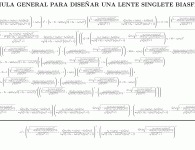

An interstellar comet from outside of our solar system has been spotted casually passing through our neck of the universe.
The European Space Agency (ESA) reports that the interstellar object was spotted by amateur Ukranian astronomer, Gennady Borisov, on August 30, near the Gemini constellation.
The Minor Planet Center has officially named it C/2019 Q4 (Borisov). While scientists still need to confirm it, this would be the second only the second interstellar object ever to be seen passing through our solar system, the first being ‘Oumuamua back in 2017.
“Like the unfolding story of ‘Oumuamua – first thought to be an asteroid then finally a comet – this looks set to be another exciting scientific investigation of an unusual visitor, helping boost our knowledge of solar system formation,” said the ESA in its blog post about the comet published on Thursday, September 12.
Astrophysicists with the ESA’s Near-Earth Object Coordination Centre used the Canada-France-Hawaii Telescore — which is located in Hawaii — to take position measurements and figure out roughly how far away the potential interstellar object is. Scientists do know the comet has an “unusual orbit” — since it’s not glued to a specific star or solar system.
Here’s a video of the comet in motion.
Descubren el segundo objeto interestelar visitante del sistema solar de la historia
???? https://t.co/wsy54m0N5bEl C/2019 Q4 (Borisov) es el segundo objeto interestelar descubierto en la historia, después del asteroide conocido como 'Oumuamua y avistado en el 2017 pic.twitter.com/bUSIBt0Zrz
— RT en Español (@ActualidadRT) September 12, 2019
The Minor Planet Center’s report says that the comet should be observable for at least a year. It’ll come about 300 million km (about 186 million miles) closer to the Sun in December, which is a good thing for scientists, since they’ll have a longer window of opportunity to study the comet. Borisov is also bigger and brighter than ‘Oumuamua.
’Oumuamua was already leaving our solar system when it was discovered — which means that Borisov could be a more promising a discovery, since it’s headed our way.
“We are now working on getting more observations of this unusual object,” said Marco Micheli of ESA’s Near-Earth Object Coordination Centre, in the blog post. “We need to wait a few days to really pin down its origin with observations that will either prove the current thesis that it is interstellar, or perhaps drastically change our understanding.”
According to astronomers, interstellar asteroids pass through our inner solar system about every year, though we don’t often catch them in action. New and advanced technologies are finally allowing us to discover these objects as they pass through our solar system.
Digital Trends reached out to the ESA for more details on the comet’s discovery, but we haven’t yet received a response.
- Astronomers think microbes could be changing Venus’ atmosphere
- The black hole at the center of our galaxy is flaring and no one knows why
- Astronomers spot formation of baby gas giant using planet-hunting satellite TESS
read more at https://www.digitaltrends.com by Allison Matyus
Tech








